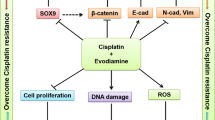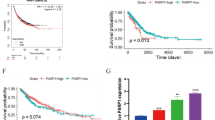Abstract
The high incidence, late diagnosis, and aggressive profile of lung cancer limit the treatment options, causing a reduced survival rate. Consequently, RNAi-based therapy appears as a potential approach to treat non-small cell lung cancer (NSCLC). This approach is based on the delivery of small RNAs, involved in the regulation of key cell pathways, to treat complex diseases among others. Concerning that, the aim of this work was focused on the co-delivery of miR-29b and retinoic acid (RA) into NSCLC cells by multifunctional micellar nanosystems (Pluronic® P123 or Pluronic® P103 linked to polyethyleneimine (PEI)). The developed P103-PEI-RA/miR-29b (10/1) presented better results and most attractive properties, promoting efficient delivery of miR-29b, as well as revealing a significant antitumoral activity promoted by a synergistic effect between miR-29b expression and RA deliver. Furthermore, the developed therapeutic approach was able to significantly decrease cell viability and migration, as well as induce cell cycle arrest and epigenetic regulation in NSCLC cells. Thus, this work outcome enables to discover a hopeful system to deliver therapeutic miRNAs, crafting a novel RNAi-based therapy combined with RA to treat NSCLC.

Graphical abstract








Similar content being viewed by others
Abbreviations
- NSCLC:
-
non-small cell lung cancer
- SCLC:
-
small cell lung cancer
- RA:
-
retinoic acid
- sRNA:
-
small RNA
- RNAi:
-
RNA interference
- miRNA:
-
microRNA
- mRNA:
-
messenger RNA
- 3’-UTR:
-
3′-untranslated region
- DNMT :
-
DNA methyltransferases
- CpGi:
-
CpG islands
- FBS:
-
fetal bovine serum
- NC:
-
scrambled sequence
- AV:
-
annexin V
- PI:
-
propidium iodide
- PEI:
-
polyethyleneimine
- DLS:
-
dynamic light scattering
- ELS:
-
electrophoretic light scattering
- EE:
-
encapsulation efficiency
- LE:
-
loading efficiency
References
Magalhães M, Alvarez-Lorenzo C, Concheiro A, Figueiras A, Santos AC, Veiga F. RNAi-based therapeutics for lung cancer: biomarkers, microRNAs, and nanocarriers. Expert Opin Drug Deliv. 2018;15:965–82.
Herbst RS, Heymach J V, Lippman SM. Molecular origins of cancer lung cancer. N Engl J Med. Massachusetts Medical Society; 2008;359:1367–80.
Cooper WA, Lam DCL, O’Toole SA, Minna JD. Molecular biology of lung cancer. J Thorac Dis. 2013;5(Suppl 5):S479–90.
Pendharkar D, Ausekar BV, Gupta S. Molecular biology of lung cancer-a review. Indian J Surg Oncol. 2013;4:120–4.
Hsu PP, Shaw AT. Lung cancer: a wiley genetic opponent. Cell. Elsevier Inc.; 2017;169:777–9.
Keeler A, Elmallah M, Flotte T. Gene therapy 2017: progress and future directions. Clin Transl Sci. 2017;10:242–8.
Bobbin ML, Rossi JJ. RNA interference (RNAi)-based therapeutics: delivering on the promise? Annu Rev Pharmacol Toxicol. 2016;56:103–22.
Castro D, Moreira M, Gouveia AM, Pozza DH, De Mello RA, Castro D, et al. MicroRNAs in lung cancer. Oncotarget. 2017;8:81679–85.
Catalanotto C, Cogoni C, Zardo G. MicroRNA in control of gene expression: an overview of nuclear functions. Int J Mol Sci. 2016;17:1712.
Yan B, Guo Q, Fu FJ, Wang Z, Yin Z, Wei YB, et al. The role of miR-29b in cancer: regulation, function, and signaling. Onco Targets Ther. 2015;8:539–48.
Fabbri M, Garzon R, Cimmino A, Liu Z, Zanesi N, Callegari E, et al. MicroRNA-29 family reverts aberrant methylation in lung cancer by targeting DNA methyltransferases 3A and 3B. Proc Natl Acad Sci U S A. 2007;104:15805–10.
Dimberg A, Bahram F, Karlberg I, Larsson L, Nilsson K. Retinoic acid–induced cell cycle arrest of human myeloid cell lines is associated with sequential down-regulation of c-Myc and cyclin E and posttranscriptional up-regulation of p27(Kip1). Blood. 2002;99:2199–206.
Noy N. Between death and survival: retinoic acid in regulation of apoptosis. Annu Rev Nutr. 2010;30:201–17.
Chen M-C, Hsu S-L, Lin H, Yang T-Y. Retinoic acid and cancer treatment. Biomed. 2014;4:22–7.
Nguyen HK, Lemieux P, Vinogradov SV, Gebhart CL, Guérin N, Paradis G, et al. Evaluation of polyether-polyethyleneimine graft copolymers as gene transfer agents. Gene Ther. 2000;7:126–38.
Xie YT, Du YZ, Yuan H, Hu FQ. Brain-targeting study of stearic acid-grafted chitosan micelle drug-delivery system. Int J Nanomedicine. 2012;7:3235–44.
Il JY, Chung KD, Kim DH, Kim YH, Lee YS, Choi KC. All-trans retinoic acid-incorporated nanoparticles of deoxycholic acid-conjugated dextran for treatment of CT26 colorectal carcinoma cells. Int J Nanomedicine. 2013;8:485–93.
Magalhães M, Almeida M, Tavares-da-Silva E, Roleira FMF, Varela C, Jorge J, et al. miR-145-loaded micelleplexes as a novel therapeutic strategy to inhibit proliferation and migration of osteosarcoma cells. Eur J Pharm Sci. 2018;123:28–42.
Pereira P, Jorge AF, Martins R, Pais AACC, Sousa F, Figueiras A. Characterization of polyplexes involving small RNA. J Colloid Interface Sci. 2012;387:84–94.
Magalhães M, Farinha D, de Lima MCP, Faneca H. Increased gene delivery efficiency and specificity of a lipid-based nanosystem incorporating a glycolipid. Int J Nanomedicine. 2014;9:4979–89.
Alameh M, Lavertu M, Tran-Khanh N, Chang C-Y, Lesage F, Bail M, et al. siRNA delivery with chitosan: influence of chitosan molecular weight, degree of deacetylation, and amine to phosphate ratio on in vitro silencing efficiency, hemocompatibility, biodistribution, and in vivo efficacy. Biomacromolecules. 2018;19:112–31.
Zhao ZX, Gao SY, Wang JC, Chen CJ, Zhao EY, Hou WJ, Feng Q, Gao LY, Liu XY, Zhang LR, Zhang Q Self-assembly nanomicelles based on cationic mPEG-PLA-b-Polyarginine(R15) triblock copolymer for siRNA delivery. Biomaterials. Elsevier Ltd; 2012;33:6793–807.
Fritz H, Kennedy D, Fergusson D, Fernandes R, Doucette S, Cooley K, et al. Vitamin A and retinoid derivatives for lung cancer: a systematic review and meta analysis. PLoS One. 2011;6:e21107.
Zhang W, Xu J. DNA methyltransferases and their roles in tumorigenesis. Biomark Res. 2017;5:1–8.
Morita S, Horii T, Kimura M, Ochiya T, Tajima S, Hatada I. miR-29 represses the activities of DNA methyltransferases and DNA demethylases. Int J Mol Sci. 2013;14:14647–58.
Magalhães M, Figueiras A, Veiga F. Smart micelleplexes: an overview of a promising and potential nanocarrier for alternative therapies. In: Grumezescu A, editor. Des Dev new nanocarriers. William Andrew Publishing; 2018;14:257–91.
Simões SM, Figueiras AR, Veiga F, Concheiro A, Alvarez-Lorenzo C. Polymeric micelles for oral drug administration enabling locoregional and systemic treatments. Expert Opin Drug Deliv. 2015;12:297–318.
Forest V, Pourchez J. Preferential binding of positive nanoparticles on cell membranes is due to electrostatic interactions: a too simplistic explanation that does not take into account the nanoparticle protein corona. Mater Sci Eng C. Elsevier B.V.; 2017;70:889–96.
Jiang H, Zhang G, Wu JH, Jiang CP. Diverse roles of miR-29 in cancer (review). Oncol Rep. 2014;31:1509–16.
Bartek J, Lukas J. Mammalian G1- and S-phase checkpoints in response to DNA damage. Curr Opin Cell Biol. 2001;13:738–47.
Siu KT, Rosner MR, Minella AC. An integrated view of cyclin E function and regulation. Cell Cycle. 2012;11:57–64.
Garzon R, Liu S, Fabbri M, Liu Z, Heaphy CEA, Callegari E, et al. MicroRNA-29b induces global DNA hypomethylation and tumor suppressor gene reexpression in acute myeloid leukemia by targeting directly DNMT3A and 3B and indirectly DNMT1. Blood. 2019;113:6411–8.
Acknowledgments
Authors would like to thank UCQPharma, Faculty of Pharmacy, University of Coimbra by the FTIR spectra acquisition, Laboratory of Bio-Imaging and Electron Microscopy, Faculty of Medicine, University of Coimbra by the TEM images acquired, and to Professor Fani Sousa (Health Sciences Research Centre, University of Beira Interior) for kindly providing the knowledge, facilities and means to the production of the sRNA samples. NMR data were collected at the UC-NMR facility which is supported in part by FEDER through the COMPETE Program (Operational Program for Competitiveness) and by Fundação para a Ciência e Tecnologia through the grants REEQ/481/QUI/2006, RECI/QEQ-QFI/0168/2012, CENTRO-07-CT62-FEDER-002012, and Rede Nacional de Ressonância Magnética Nuclear (RNRMN).
Funding
This work received financial support from Portugal National Funds (FCT/MEC, Fundação para a Ciência e Tecnologia/Ministério da Educação e Ciência) through project UID/QUI/50006/2013, co-financed by European Union (FEDER under the Partnership Agreement PT2020). It was also supported by the Research Project POCI-01-0145-FEDER-016642 and the grant FCT PTDC/CTM-BIO/1518/2014 from Fundação para a Ciência e Tecnologia (FCT) and the European Community Fund (FEDER) through the COMPETE2020 program.
Author information
Authors and Affiliations
Corresponding authors
Ethics declarations
Conflict of interest
The authors declare that they have no conflict of interest.
Additional information
Publisher’s note
Springer Nature remains neutral with regard to jurisdictional claims in published maps and institutional affiliations.
Electronic supplementary material
ESM 1
(DOCX 1883 kb).
Rights and permissions
About this article
Cite this article
Magalhães, M., Jorge, J., Gonçalves, A.C. et al. miR-29b and retinoic acid co-delivery: a promising tool to induce a synergistic antitumoral effect in non-small cell lung cancer cells. Drug Deliv. and Transl. Res. 10, 1367–1380 (2020). https://doi.org/10.1007/s13346-020-00768-7
Published:
Issue Date:
DOI: https://doi.org/10.1007/s13346-020-00768-7




